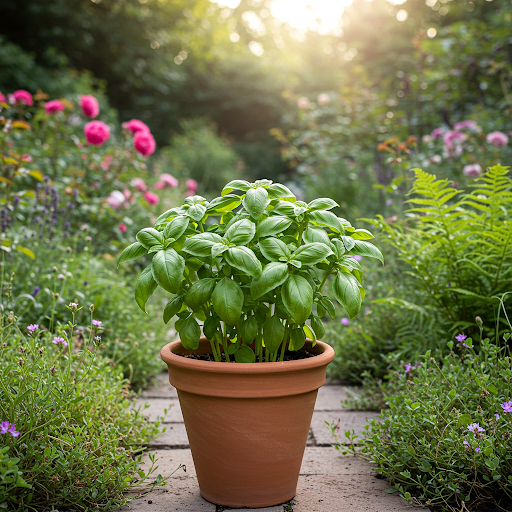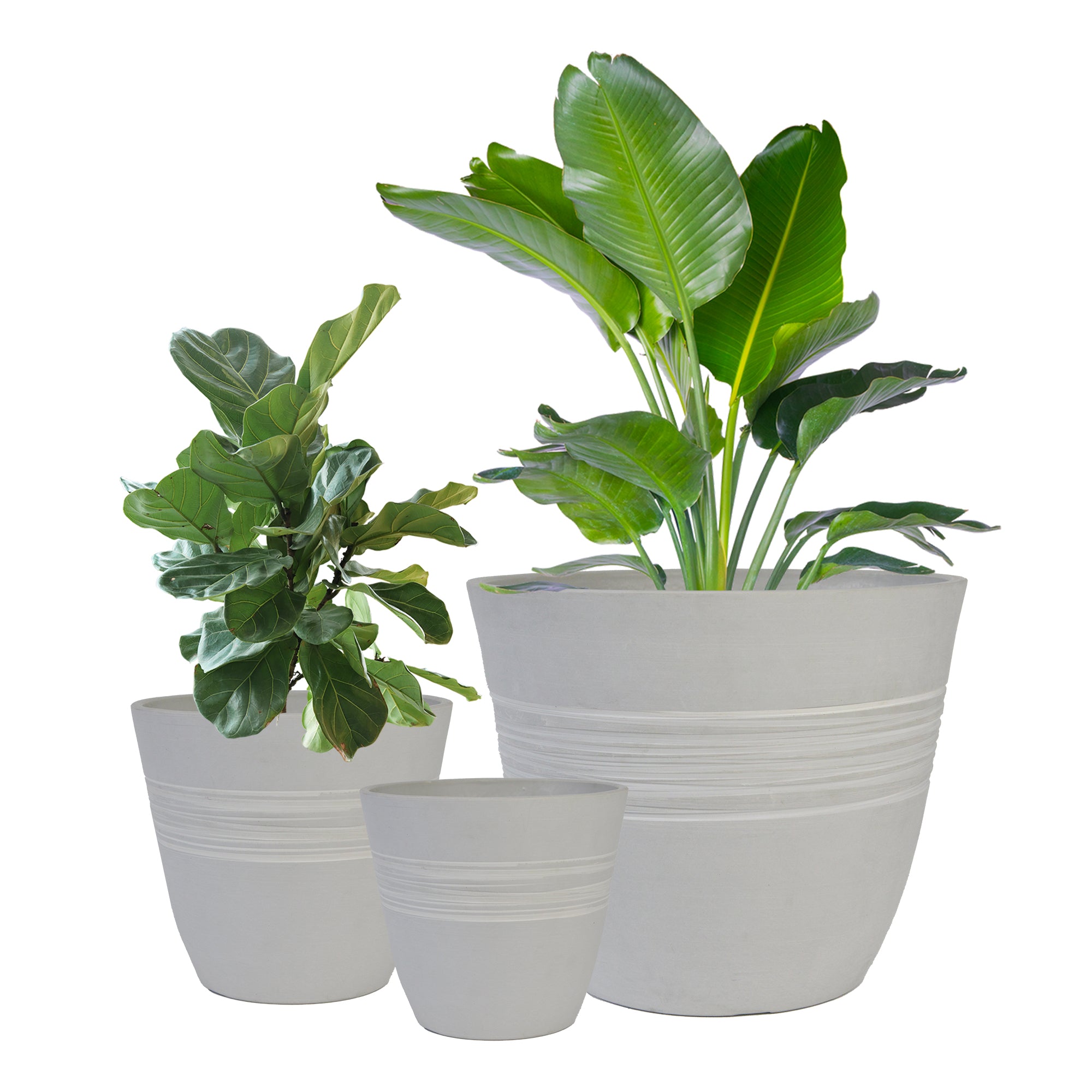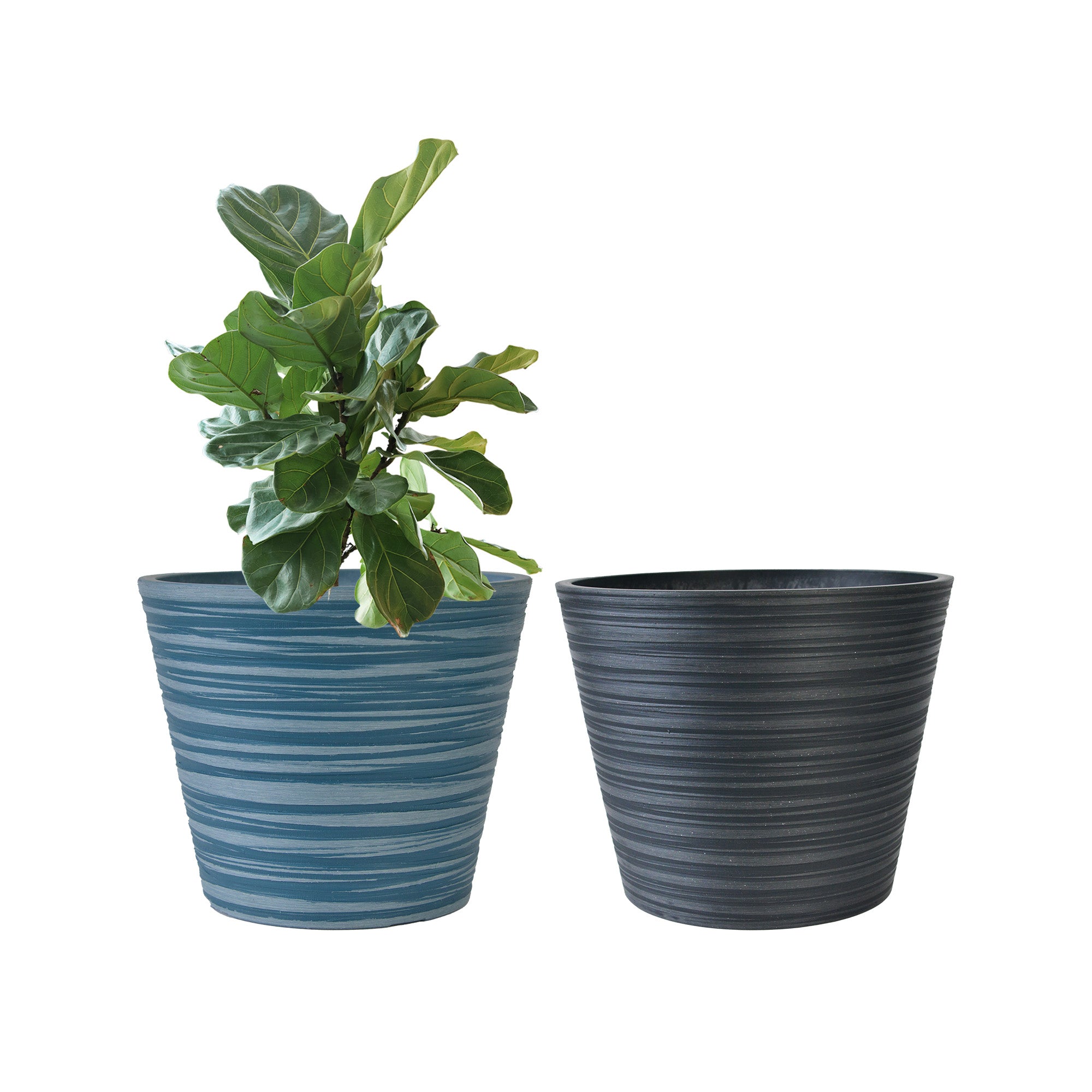Basil: Grow Your Own Fresh Flavor at Home
Basil, known scientifically as Ocimum basilicum, is a fragrant and flavorful herb that is easy to grow in a home garden, whether indoors or outdoors. Part of the Lamiaceae family and native to tropical regions from central Africa to Southeast Asia, basil is prized in cuisines worldwide, especially Mediterranean and Southeast Asian dishes. Growing your own basil ensures a fresh supply of this versatile herb for culinary uses and adds a delightful aroma to your garden.

Ideal Growing Conditions:
- Sunlight: Basil thrives in full sun, needing at least 6-8 hours of direct sunlight per day to grow vigorously and produce flavorful leaves. While it can tolerate partial shade, especially in very hot climates, basil grown in less sun may become leggy and produce fewer aromatic oils.
- Soil: Basil prefers well-draining, fertile soil with a slightly acidic to neutral pH, ideally between 6.0 and 7.0. For containers, use a high-quality potting mix. In garden beds, amend heavy clay or sandy soils with compost or other organic matter to improve drainage and fertility.
- Watering: Basil needs consistent moisture, especially during hot summer months. Water deeply when the top inch of soil feels dry to the touch. Avoid overhead watering to prevent fungal diseases; water at the base of the plants instead. While basil needs regular watering, it’s also important to ensure the soil is not waterlogged, as this can lead to root rot.
- Temperature: Basil is a warm-weather annual and is sensitive to frost. It thrives in temperatures between 70°F to 90°F (21°C to 32°C). Plant basil outdoors after the danger of spring frost has passed and the soil has warmed up. Basil is also sensitive to cold temperatures and growth will slow or stop if temperatures drop below 50°F (10°C).

Planting Basil:
- Starting from Seeds or Plants: Basil is easily started from seeds indoors 6-8 weeks before the last expected frost, or directly sown outdoors once the soil is warm. For quicker results, you can also purchase basil seedlings from nurseries.
- Spacing: When planting basil in garden beds or containers, space plants 12-18 inches apart to allow for good air circulation and growth. Closer spacing can be used for smaller varieties, but ensure plants have enough room to develop.
- Planting Time: The best time to plant basil outdoors is in late spring or early summer, after the last frost. Ensure the soil temperature is consistently above 60°F (15°C) for optimal growth.
Choosing Pots:
- Suitable Pot Types: Basil grows well in various types of containers, including terracotta, plastic, ceramic, and fabric pots. Terracotta pots are beneficial for drainage and aeration, while plastic pots retain moisture well. Fabric pots are also excellent for drainage and root health.
- Drainage: Good drainage is crucial for basil to prevent root rot. Ensure all pots have drainage holes.
- Pot Size: Choose pots that are at least 6-8 inches deep and wide for individual basil plants. For larger, bushier varieties or for planting multiple basil plants together, use larger containers, such as 12 inches or more in diameter.
- Potting Mix: Use a well-draining, fertile potting mix. You can amend regular potting mix with compost to enrich it and improve drainage.
Care Tips:
- Fertilizing: Basil benefits from regular feeding, especially when grown in containers. Use a balanced liquid fertilizer diluted to half strength every 2-3 weeks during the growing season. Alternatively, incorporate slow-release fertilizer into the potting mix at planting time.
- Pinching and Pruning: Regularly pinch off the tips of basil stems to encourage bushier growth and prevent the plant from becoming leggy. Once flower buds appear, pinch them off to encourage leaf production, as basil leaves become less flavorful after the plant flowers. Regular harvesting of leaves also acts as pruning and encourages new growth.
- Harvesting: Harvest basil leaves regularly throughout the growing season. Start harvesting when plants are about 6-8 inches tall. Pinch or cut off leaves from the top of the stems, just above a leaf node (where leaves emerge from the stem). This encourages the plant to branch out and produce more leaves.
- Pest and Disease Control: Basil is relatively pest-resistant but can be affected by aphids, spider mites, and slugs. Monitor plants regularly and take action if pests are present. Good air circulation and avoiding overhead watering can help prevent fungal diseases like powdery mildew and downy mildew.
Varieties of Basil:
- Sweet Basil: The most common type, known for its classic basil flavor, widely used in Italian cuisine.
- Genovese Basil: A type of sweet basil, often considered the quintessential pesto basil.
- Purple Basil: Offers beautiful deep purple foliage and a slightly different, sometimes spicier, flavor than sweet basil.
- Thai Basil: Has a slightly anise-like or licorice flavor, commonly used in Southeast Asian dishes.
- Lemon Basil: Features a distinct lemon scent and flavor, excellent for teas and salads.
- Lime Basil: Offers a lime-like aroma and flavor, great for cocktails and Mexican cuisine.
- Globe Basil: A compact, bushy variety with small leaves and a milder flavor, ideal for edging and small containers.
In summary, Basil is a rewarding and easy-to-grow herb that brings fresh flavor and fragrance to your home garden and kitchen. By providing it with plenty of sunshine, well-drained soil, consistent moisture, and regular harvesting, you can enjoy a bountiful supply of basil leaves throughout the growing season.
For more detailed information, you can visit the Wikipedia page on Ocimum basilicum.
11TH
By greenship|2024-08-13T02:50:25+00:00August 13, 2024|Categories: Hand-carving Series|
Plant Pots 6 inch 8 inch 12 inch for Indoor Outdoor Plants, Set of 3 Modern Decorative Planter with Drainage Hole, Decorative Flower Pots
By greenship-seo|2025-04-10T06:38:40+00:00January 16, 2025|Categories: Hand-carving Series|Tags: Decorative Flower Pots|
20VD
By greenship|2024-08-13T06:43:41+00:00August 13, 2024|Categories: Hand-carving Series|
KC2-21G
By greenship|2024-08-13T06:19:08+00:00August 13, 2024|Categories: Hand-carving Series|
Modern Plant Pots丨Planter for Indoor Plants,8 inch or 10 inch Plant Pots with Drainage Hole,Decorative Flower Pots
By greenship-seo|2025-04-10T08:32:55+00:00January 7, 2025|Categories: Hand-carving Series|Tags: Decorative Flower Pots, Self-Watering Pots|
Planter 5 in W / 8 in W / 12 in W or Indoor Outdoor Plants, Modern Decorative Plant Pots with Drainage Hole, Decorative Flower Pots
By greenship-seo|2025-04-10T06:37:58+00:00January 16, 2025|Categories: Hand-carving Series|Tags: Decorative Flower Pots|






